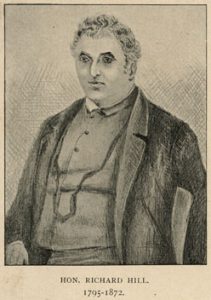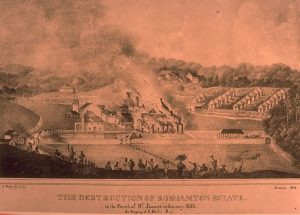For Black History Month 2023, we present a literary gem that is quite possibly unique: a poem written a black RAF veteran of the Second World War, Ralph Ottey. Ralph volunteered in Jamaica in 1944. He was among the first intake of approximately 5,000 Caribbean recruits who trained as RAF ground personnel at RAF Hunmanby Moor. Thereafter he was posted to RAF Woodhall Spa, then the home of the famed 617 ‘Dambuster’ Squadron. After the war, Ralph served for some time at RAF Coningsby, before opting to take a bookkeeping qualification at the County Commercial College, Wood Green, Staffordshire. Ralph wrote this poem at the conclusion of his course in 1947, en route to RAF Sealand and repatriation to Jamaica.
Stranger bwoy you come from foreign
You a lion
You a sailor on Nelson’s Column
You a Mary Seacole
You a Constantine, Turpin and Buxton
You a squashed lemon
You a broken pub glass
You an empty bus seat
Stranger bwoy you inconvenient
Stranger boy you black.
The sense of rejection – or at least of the lack of appreciation of the service he and his compatriots had offered to ‘the Mother Country’ during the war – is very strong.
Ralph was not in Jamaica long before he returned to the UK. He married and settled in Boston, Lincolnshire, where he still lives today at the age of 99. His was a different experience to those who congregated together in cities like London, Leeds or Nottingham: there was no Caribbean community in the making in Boston, and as such he had to work hard to adapt to this community in order not only to survive but thrive – which he succeeded in doing.
There are several references to well known black people of the 1940s in his poem, and indeed from much earlier times. A black sailor features on one of Carew’s bronze reliefs at the base of Nelson’s column in Trafalgar Square. He is one of 27 sailors of African or Caribbean origin known to have served on HMS Victory at the Battle of Trafalgar in 1805.[1]
Mary Seacole (1805-1881) was born in Jamaica. She was an intrepid traveller and drew on her hospitality experience (managing hotels, catering) in many challenging settings, including in Cruces, Central America and setting up the British Hotel at Balaclava, during the Crimean War. Her autobiography, Wonderful Adventures of Mrs Seacole in Many Lands, was published in 1857. A statue in her memory was unveiled in London in 2016.
Learie Constantine (1901-1971) was one of the most famous Caribbean cricketers of all time.[2] He was born in Trinidad and played for the West Indies in 18 test matches before the Second World War, as well as pursuing a professional cricketing career in England. During the War, he worked for the Ministry of Labour and National Service, with responsibility for the welfare of Caribbean workers in factories in the UK. After the war he became active in politics, both in Trinidad and the UK. He became the UK’s first black peer in 1969. Ralph met Constantine on at least two occasions. Constantine had been among the party of dignitaries who welcomed Ralph’s troopship to Liverpool in 1944 and attended the passing-out parade of his intake at RAF Hunmanby Moor later that year. At this parade, Constantine stopped to speak to Ralph and gave him this advice: ‘Very soon you will be rubbing shoulders with English people. Just behave in England as you would in Little London, with your grandparents around, and you will get along fine. The English are a fair-minded people and quite friendly when they get to know you. I say this as someone who has taken a London hotel to court for their refusal to accept me as a paying guest because of my colour.’ Constantine’s successful case against the hotel for racism had only recently been heard in court (June 1944). It attracted much publicity at the time. Constantine also visited the Commercial College in Wood Green while Ralph was studying there.
Turpin and Buxton were both well-known boxers from families of boxing brothers. Randolph, better known as Randy, Turpin (1928-1996) was from Leamington Spa and had already achieved boxing success by the mid-1940s. He became world middleweight champion in 1951.[3] Alex Buxton (1926-2004), whose family lived in Watford, was the most successful of his brothers, making his professional debut in 1941. In the immediate postwar period, he was at the height of his success, winning the British light-heavyweight title in 1952.[4]
[1] See ‘Black History Month’ at https://thedockyard.co.uk/news/black-history-month/. Accessed 1 October 2023.
[2] See The National Archives, ‘Sir Learie Constantine’ at https://beta.nationalarchives.gov.uk/explore-the-collection/stories/sir-learie-constantine/. Accessed 1 October 2023.
The accounts of the meetings with Ralph Ottey are taken from the latter’s memoir, to be published in 2024.
[3] See Wikipedia entry on Randolph Turpin at https://en.wikipedia.org/wiki/Randolph_Turpin. Accessed 1 October 2023.
[4] See ‘An interview with Allan Buxton’ on the Sporting Heritage blogsite at https://www.sportingheritage.org.uk/content/news/blog/interview-allan-buxton. Accessed 1 October 2023.

